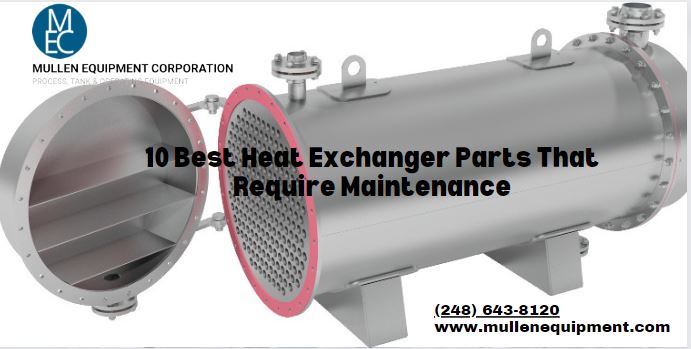Heat exchangers play a critical role in various industries by transferring heat between fluids to facilitate processes such as heating, cooling, or condensation. Regular maintenance of heat exchangers is essential to ensure optimal performance and longevity. Here are 10 heat exchanger parts that commonly require maintenance:
Tubes:
Tubes are a crucial component of heat exchangers. Over time, they may experience fouling or corrosion, affecting heat transfer efficiency. Regular cleaning or tube replacement may be necessary.
Fins:
Fins enhance the heat transfer surface area. They are prone to fouling, corrosion, or damage. Cleaning or repairing fins helps maintain efficient heat exchange.
Gaskets and Seals:
Gaskets and seals prevent leakage between fluid channels. Regular inspection and replacement of worn-out gaskets and seals are vital to prevent leaks and maintain the integrity of the heat exchanger.
Fluid Inlet and Outlet Connections:
Check for any leaks or blockages in the fluid inlet and outlet connections. Tighten connections and address any issues promptly to prevent loss of efficiency.
Baffles:
Baffles direct the flow of fluids within the heat exchanger. Inspect baffles for damage or misalignment, as these issues can impact the distribution of heat and fluid flow.
Shell and Tube Exchanger Shell:
The outer shell of a heat exchanger can corrode over time. Regular inspections and corrosion protection measures are essential to prevent deterioration and maintain structural integrity.
Control Valves:
Control valves regulate the flow of fluids in a heat exchanger. Ensure that these valves are functioning correctly, and clean or replace them if they show signs of wear or malfunction.
Temperature and Pressure Sensors:
Accurate temperature and pressure measurements are crucial for efficient heat exchange. Regularly calibrate and check the sensors to ensure they provide accurate readings.
Expansion Joints:
Expansion joints accommodate thermal expansion and contraction. Check for any signs of wear or damage, and replace expansion joints if necessary to prevent leaks and maintain flexibility.
Cleaning System:
Heat exchangers equipmentoften has built-in cleaning systems. Ensure that these systems, such as automatic backwashing filters, are functioning correctly to prevent fouling and scaling.
Regular preventive maintenance schedules, including cleaning, inspection, and replacement of worn components, are essential to maximize the lifespan and efficiency of heat exchangers. It's important to follow manufacturer guidelines and industry best practices for maintenance procedures.
Keywords - Heat transfer equipment,Heat Transfer Equipment distributor


No comments yet